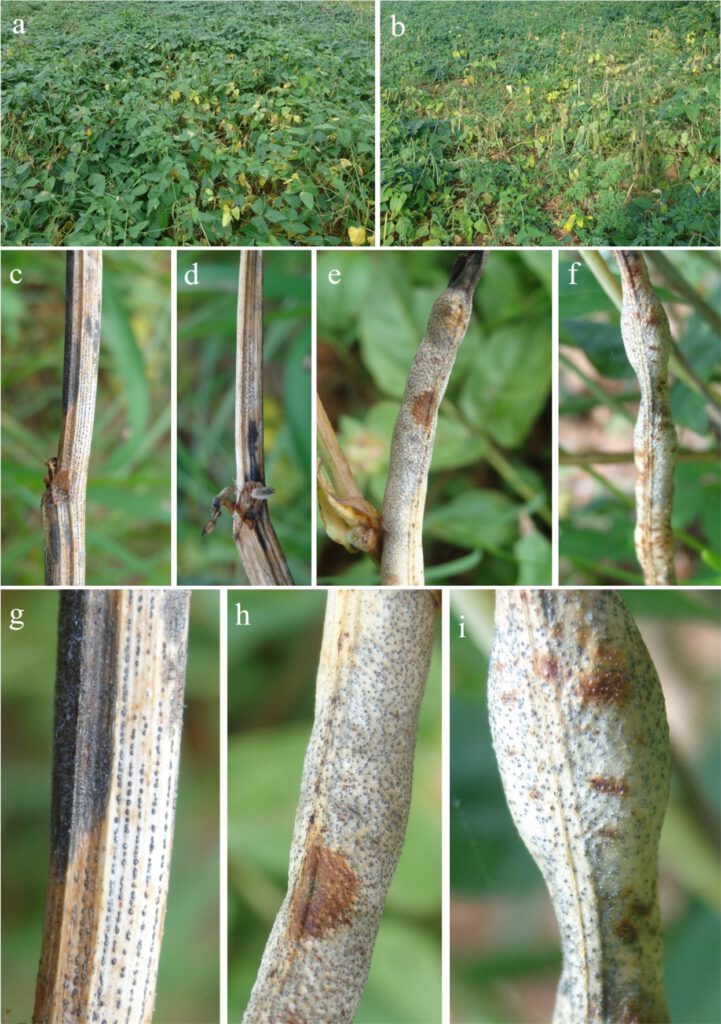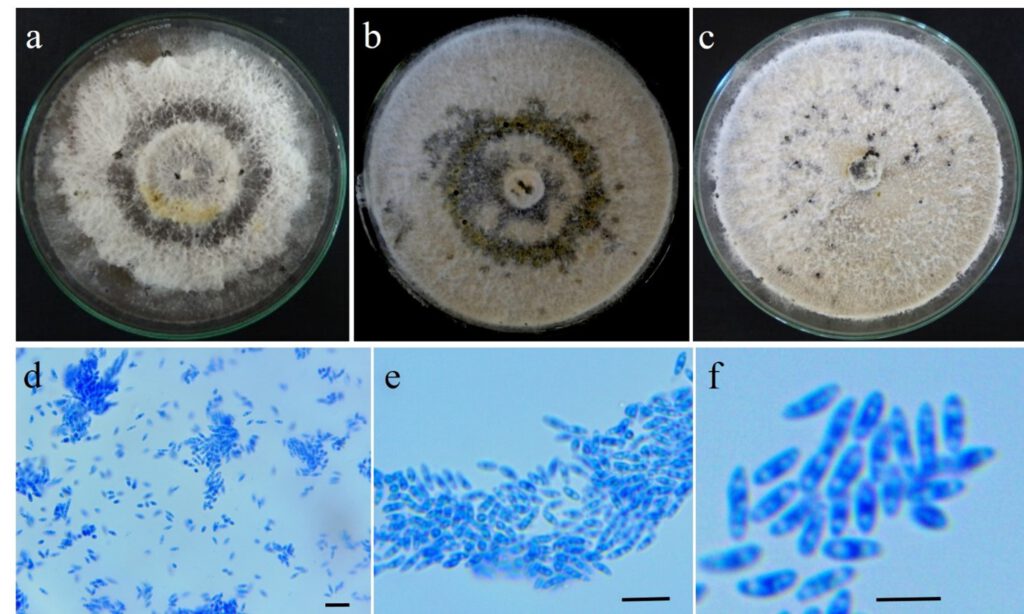Diaporthe phaseolorum (Cooke & Ellis) Sacc., Syll. Fung. (Abellini) 1: 692 (1882)
MycoBank number:MB 164797; Index Fungorum number:IF 164797; Facesoffungi number: FoF 10638;
Pathogenic and associated with stem of Vigna unguiculata (L.) Walp. Sexual morph: Undetermined. Asexual morph: Conidiomata 105–192 µm high, 165–285 µm diam. x̄ =122×255 μm, n=30, pycnidial, pyriform, initially immersed, erumpent at maturity, globose to pyriform, black, elongated neck, often with light yellowish white conidial cirrus extruding from ostiole. Pycnidial wall parenchymatous consisting of 3–6 layers of pale brown, thick-walled cells of textura angularis. Pycnidia had globose locules and prominent beaks, which immersed in medium, black, solitary, discoid or irregular. Conidiophores 3.8–7.5×3.8–7.5 μm (x̄ =4.2×5.8 μm, n = 30), ampulliform, straight to sinuous, unbranched, hyaline, smooth. Conidiogenous cells 8.2–12.8 × 1.6–2.5 μm (x̄ =9.8×2.2 μm, n=30), phialidic, terminal, cylindrical, slightly tapering towards the apex. Alpha-conidia 5.3–7.7 × 1.5–4.6 μm (x̄ =6.5×2.8 μm, n=30), aseptate, hyaline, smooth, ovate to ellipsoidal, guttulate. Beta-conidia 10.2–17.5×1.2–2.3 μm (x̄ = 12.6×1.2 μm, n=30), hyaline, filiform, hamate.
Cultural characteristics: On potato dextrose agar, colonies with white, floccose, aerial mycelium were recorded after 7 days of incubation. Pure cultures obtained from the colonies expressed from infected pod and stem samples.
Material examined: INDIA, Karnataka, Mysuru Doddamaragowdanahally, on infected stem of cowpea plants as pathogen. Pathogenicity tests were conducted and proved to be pathogenic on healthy cowpea plants, 2020.
Distribution: India, China, USA and Other countries
Hosts:
GenBank Accession Numbers: ITS: MW737799, MW737800; TUB2: OM934818, OM934819; EF: OM934816, OM934817
Notes: Previously, Phomopsis longicolla is known to be associated with cowpea seeds. However, no reports are available on the association of D. phaseolorum of cowpea. This is the first report of D. phaseolorum associated with Cowpea from India and worldwide.

Legend for Figure: Diagnostic features of cowpea stem blight and pod blight disease caused by Diaporthe phaseolorum and D. longicolla: a – b field view of cowpea plants affected with Diaporthe stem blight and pod blight disease; c, d, g – Stem blight disease caused by D. longicolla, & e,f,h,I – pod blight disease symptoms caused by D. phaseolorum.

Legend for Figure: Cultural and micromorphological characteristics of Diaporthe phaseolorum isolated from Cowpea: a – c pure cultures of D. phaseolorum on PDA (15 days old); d – f alpha conidia of D. phaseolorum under compound microscope.
